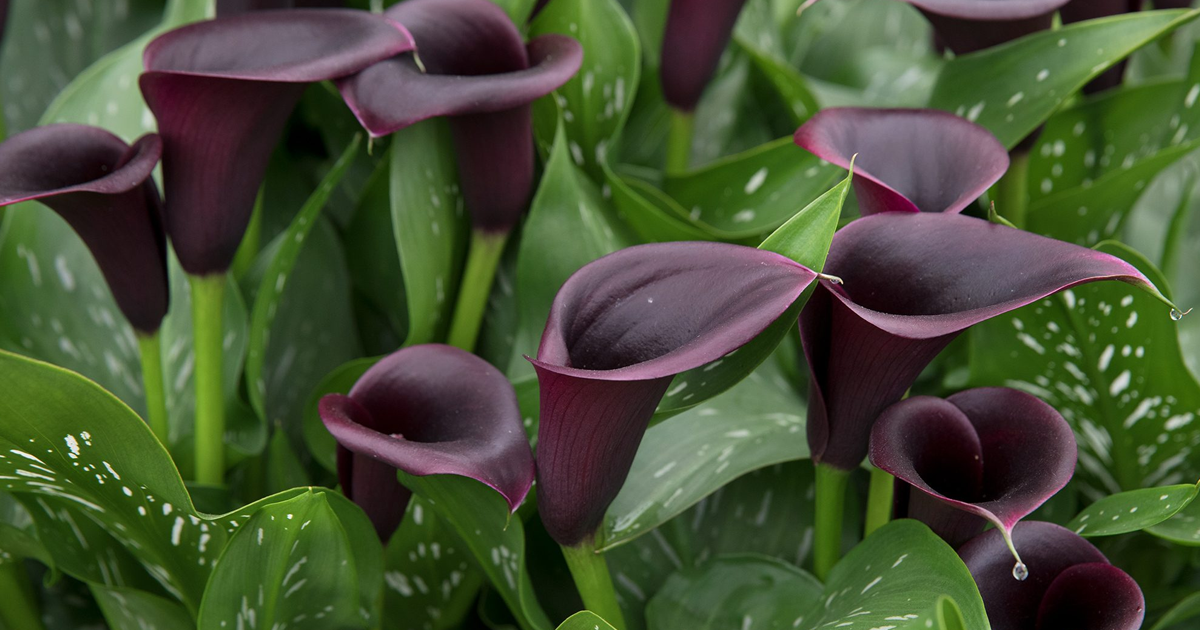
Calla lilies are beautiful, trumpet-shaped flowers with an elegance that is renowned for their stunning beauty and vibrant colors. They are native to southern Africa, and these perennial plants are loved in gardens, floral arrangements, and indoor pots. Although calla lilies are relatively low-maintenance, it takes a bit of attention to get them to bloom and make the flowers last longer. Here’s how you can do it.
Understanding the Growth Cycles of Calla Lilies
Calla lilies grow according to a specific cycle; this cycle comprises an active growth period and a dormancy period. To understand what care they would require, understanding this cycle is important:
Dormancy Period: When the blooming season is over, the calla lily usually goes into a dormant stage towards the end of fall. The plant would reserve energy in the dormancy period for its next growth.
Active Growth Phase: When spring and summer set in, the calla lily leaves emerge and flowers open. This stage is the time to provide necessary conditions to initiate blooms.
How to Get Your Calla Lilies to Bloom
Choose Your Location
Light: Calla lilies appreciate bright, indirect light. Place outdoor plants where they will be exposed to sun in the morning and shade by the afternoon. Indoor plants do best near an east- or west-facing window with filtered sunlight.
Temperature: The optimal temperature for calla lilies is between 60–75°F (15–24°C) during the growing season. Avoid exposing the plant to sudden temperature fluctuations or drafts.
Well-Draining Soil
Calla lilies grow well in rich, well-draining soil with a slightly acidic to neutral pH (6.0–7.0). Add organic matter such as compost or peat moss to improve the texture and nutrient content of the soil.
Water Properly
Water the soil during the growing phase consistently moist but not soggy. Excessive watering will cause root rot, while little water may cause stunted growth and no blooms.
Water very minimally during the dormancy period to allow the plant to rest.
Fertilize regularly
Apply balanced, water-soluble fertilizer (10-10-10 or 5-10-10) every two to three weeks of the growing season. Do not over-fertilize because when overfed with nutrients, usually flowers are being compromised for luxuriant foliage.
Maintain Suitable Humidity
Calla lilies do best in moderately humid environments. For indoor gardening, use a humidifier, or place a tray of water next to your plant to meet its humidity requirement.
Pruning and Deadheading
Remove spent blooms immediately to divert the plant’s energy to producing new flowers. Cut yellowing or dead leaves to maintain the health and appearance of the plant.
Repotting
Repot calla lilies every two to three years or when the plant has outgrown its pot. Use fresh soil and a slightly larger pot to give room for growth.
How to Make Calla Lily Flowers Last Longer
Cut Flowers Right
If using calla lilies as cut flowers, harvest them in the early morning when they are well-hydrated. Use a sharp, clean knife or scissors to make a diagonal cut on the stem.
Condition the Stems
Place the cut stems in lukewarm water immediately after cutting. Remove any leaves that will be submerged in water to prevent bacterial growth.
Use Clean Vases
Use a clean vase filled with fresh water. Add floral preservative to the water to extend the flowers’ lifespan.
Change Water Regularly
Replace the water in the vase every two to three days, recutting the stems slightly each time to ensure proper hydration.
Avoid Direct Sunlight and Heat
Keep cut flowers away from direct sunlight, heat sources, and drafts. A cool, shaded location will help them last longer.
Monitor for Pests
Check for the most common pests that attack flowers: aphids, spider mites, and thrips. Tackle infestations right away with insecticidal soap or neem oil.
Common Problems and Fixes
Won’t Bloom
Causes: Not enough light, overwatering or underwatering, or poor nutrients.
Solution: Change the routine of care given to the plant by giving it more light, watering the soil in a regular fashion, and feeding it often.
Yellowing Leaves
Causes: Overwatering, underwatering, or a lack of nutrients.
Solution: Check the moisture content of the soil and amend your watering. Fertilize if needed.
Root Rot
Cause: Too much water or the soil doesn’t drain properly.
Solution: Allow the soil to dry a little between watering and ensure your pot has holes in it to allow for good drainage.
Pest Infestations
Cause: Aphids, spider mites, or thrips.
Solution: Insecticidal soap or neem oil; make sure air circulates around the plant.
Seasonal Care for Calla Lilies
Spring and Summer
It’s the season for active growth and blooming. Give full sun, plenty of water, and nutrients.
Fall
Cut back on the water as the plant goes into a dormant stage. Let it brown off completely before cutting back foliage.
Winter
For plants growing outdoors in harsher climates, dig up the rhizomes when the first frost hits. Then store them in a cool dry place till spring. Houseplants can be left in their pots but require the least amount of water.
Final Thoughts
If well taken care of, calla lilies may be your flowers of the day and show some elegant leaves through the entire growing season. Now, understand its growth cycle so that it might bloom right into your backyard, and to have its flowers on a decorative plate, too. Whatever your skill set, a professional or just getting started, all these will certainly make your calla lily thrive with these tips to longer-lasting flowers.







